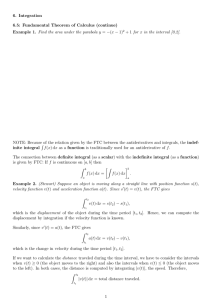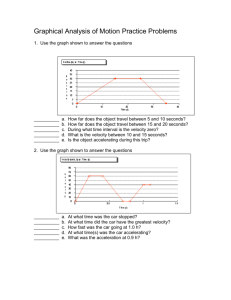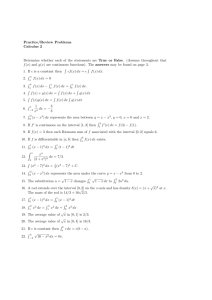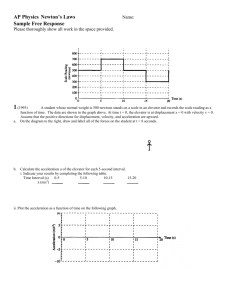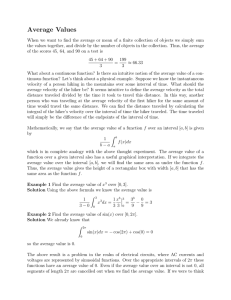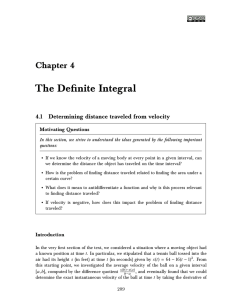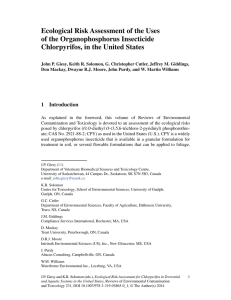Week-In-Review #8 (6.1, 6.2, 6.3)
advertisement
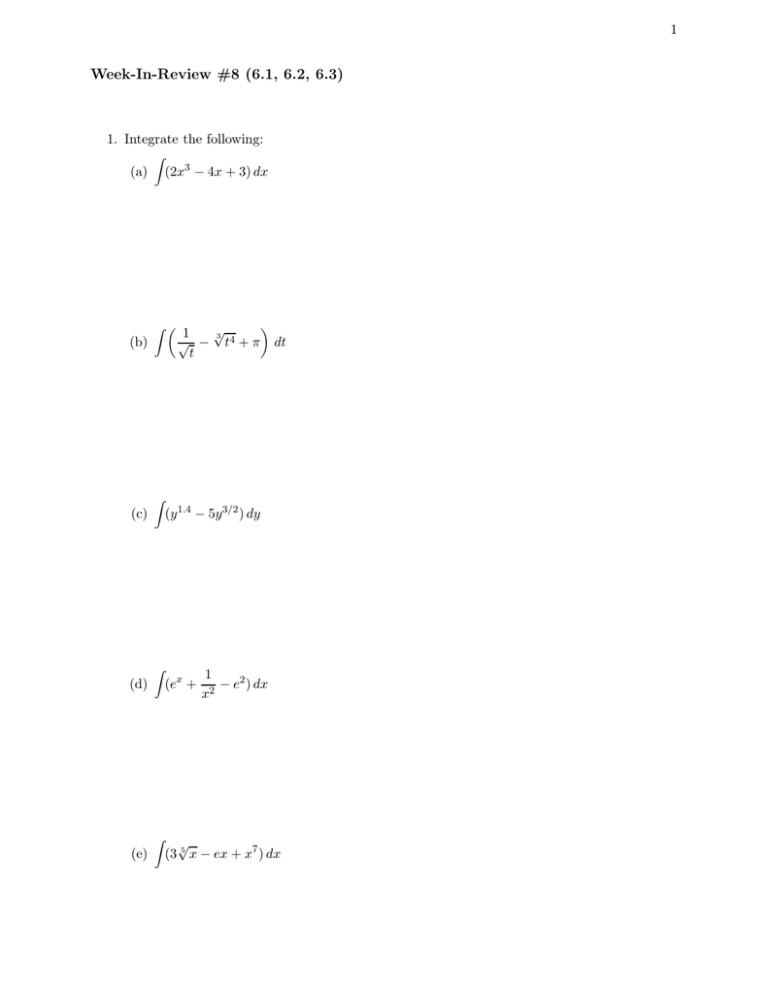
1 Week-In-Review #8 (6.1, 6.2, 6.3) 1. Integrate the following: (a) Z (b) Z (c) Z (y 1.4 − 5y 3/2 ) dy (d) Z (ex + (e) Z √ (3 5 x − ex + x7 ) dx (2x3 − 4x + 3) dx √ 1 3 √ − t4 + π t dt 1 − e2 ) dx x2 2 (f) Z (g) Z 5z 4 + 6z − 2 z3 (h) Z (3x2 x3 + 6) dx (i) Z (8ye−2y [6t(t + 2)] dt p 2 +3 ) dy ! dz 3 (j) Z (k) Z (l) Z x−2 2 2x − 8x + 6 [t(t − 8)100 ] dt 1 x ln x dx dx 4 (m) Z 2. Find y if e2y (e2y + 3)4 ! dy dy 2 − x2 = and y(1) = 2. dx x4 3. Find f (x), if f ′′ (x) = 3x + ex , f ′ (0) = 5, and f (1) = 5.5. 5 150 x+2 where x is the number of thousands of items produced and sold and M R(x) is measured in thousands of dollars per thousands of items. Find the revenue function for KNB Co. 4. The monthly marginal revenue function for KNB Co. is given by M R(x) = 10 − 0.01x + 5. A certain weed grows at the rate of 0.5e0.1t cm/day. If the weed is 6 cm tall after 2 days, how tall is the weed after t days? 6. The rate √of change of sales of a brand new soup (in thousands of cans per month) is given by R(t) = t + 2, where t is the time in months that the new product has been on the market. Find the total sales after 9 months. 6 7. Approximate the area under the curve y = x2 + 2 and above the x-axis from x = 2 to x = 4, with 4 rectangles, using (a) a left hand sum (LHS). (b) a right hand sum (RHS). 8. If you were approximating the area under y = −x2 + 25 on the interval [1, 3] with a Riemann sum, would a LHS or a RHS be an overestimate? How do you determine this? 7 9. When approximating the value of the area under y = xex on the interval [3, 7] using a left-hand Riemann sum with five rectangles, (a) what is the width of each rectangle? (b) what is the exact area of the middle rectangle? 10. The velocity of a car accelerating from rest to a speed of 60 mi/hr over a period of 30 seconds is given below: Time (s) Velocity (mi/hr) 0 0 5 15 10 30 15 45 20 60 25 60 30 60 (a) Give an estimate for the distance traveled during the 30 seconds by using the velocity at the beginning of each 5-second time interval. Is this approximation an upper or lower estimate of the distance traveled? (b) Give an estimate for the distance traveled during the 30 seconds by using the velocity at the end of each 5-second time interval. Is this approximation an upper or lower estimate of the distance traveled?


